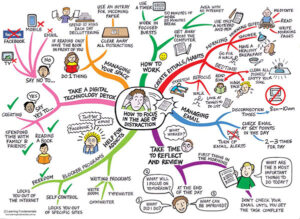The Art of Choosing the Right Tools,Language or Technology for Your Project
The choice of language or technology and the corresponding database for a project’s development depends on various factors, including the project’s requirements, goals, and constraints. Here are some common scenarios and suitable choices:
-
Web Development:
- Language/Technology: HTML, CSS, JavaScript, PHP, Python, Ruby, Java, .NET, etc.
- Database: MySQL, PostgreSQL, MongoDB, SQLite, or SQL Server, depending on data structure and scalability requirements.
-
Mobile App Development:
- Language/Technology: Java or Kotlin for Android, Swift or Objective-C for iOS, or cross-platform frameworks like React Native or Flutter.
- Database: SQLite for local storage, and RESTful APIs or cloud-based databases for data synchronization.
-
E-commerce Website:
- Language/Technology: E-commerce platforms like Magento, WooCommerce (WordPress), Shopify, or custom development using PHP, Python, Ruby on Rails, etc.
- Database: MySQL or PostgreSQL for product and customer data.
-
Enterprise Software:
- Language/Technology: Java, C#, or JavaScript (Node.js) for server-side development. A mix of technologies for the front-end.
- Database: PostgreSQL, Oracle, SQL Server, or other enterprise-grade databases, depending on scalability and data security requirements.
-
Data Analytics Platform:
- Language/Technology: Python (with libraries like Pandas and NumPy), R, or a Big Data technology stack (Hadoop, Spark, etc.).
- Database: Hadoop Distributed File System (HDFS), NoSQL databases (e.g., Cassandra), or cloud-based data warehouses like Amazon Redshift or Google BigQuery.
-
IoT (Internet of Things) Application:
- Language/Technology: Embedded C/C++ for IoT devices, Python, or Node.js for data processing, and mobile app development for user interfaces.
- Database: NoSQL databases like MongoDB, and cloud-based storage for scalability.
-
Blockchain Application:
- Language/Technology: Solidity for smart contracts, JavaScript or TypeScript for dApps (decentralized applications).
- Database: Distributed ledgers and decentralized databases specific to the blockchain platform (e.g., Ethereum, Hyperledger Fabric).
-
Machine Learning and AI:
- Language/Technology: Python with libraries like TensorFlow, PyTorch, or scikit-learn.
- Database: NoSQL or SQL databases, depending on data structure and machine learning model requirements.
-
Game Development:
- Language/Technology: Game engines like Unity (C#), Unreal Engine (C++), or custom development using C++ or other languages.
- Database: Often custom-designed databases for game state and player data.
-
Content Management System (CMS):
- Language/Technology: WordPress (PHP), Drupal, Joomla, or custom development using PHP, Python, Ruby, etc.
- Database: MySQL or PostgreSQL for content storage.
The choice of language, technology, and database should be made after a thorough analysis of the project’s specific needs, scalability requirements, budget, and the development team’s expertise. It’s essential to align these choices with the project’s goals to ensure its success.
- Published in Creativity, Designing, Mobile, Technology, Uncategorized
Web 1.0 Pioneering the Internet Frontier-Era 1
Web 1.0 stands as the genesis of the modern internet, laying the foundation for the vast digital landscape we navigate today. During this era, the internet emerged as a groundbreaking communication tool, transforming the world’s accessibility to information. In this article, we will delve into the inception of Web 1.0, its SEO-friendly characteristics, easily comprehensible language, and explore some key pioneers who played a significant role in its development.
Web 1.0 was a transformative era in the history of the internet, setting the stage for the digital revolution that followed. The simplicity of language and user-friendly design principles of Web 1.0 content unwittingly contributed to the foundation of SEO practices we employ today. The brilliance of the scientists and pioneers involved paved the way for a vast, interconnected world where information is readily accessible to billions of users worldwide. As we continue to evolve and innovate in the digital landscape, we owe a debt of gratitude to these visionaries who blazed the trail and forever changed the way we interact with information.
The Birth of Web 1.0
Web 1.0, also known as the “Static Web,” introduced static web pages and limited user interaction. It marked the beginning of the internet era, where content creators published information on websites, and users consumed this information passively. During this phase, the World Wide Web took its first steps toward becoming a global platform for sharing knowledge and connecting people.
Language Accessibility of Web 1.0
In the early days of Web 1.0, content creators recognized the importance of communicating complex ideas in simple terms. They aimed to make information accessible to a broader audience, and as a result, web content was presented in basic, user-friendly language. This approach directly reached the subconscious mind of the readers, facilitating a greater understanding of the digital landscape.
Key Scientists and Pioneers of Web 1.0
Web 1.0 owes its existence to several brilliant minds who played significant roles in its development. Some notable scientists and pioneers include:
- Sir Tim Berners-Lee: Credited as the inventor of the World Wide Web, Sir Tim Berners-Lee developed the first web browser and laid the foundations for linking web pages through hyperlinks.
- Marc Andreessen: Co-author of the Mosaic web browser, Andreessen played a vital role in popularizing the graphical user interface (GUI) of Web 1.0, making the internet more visually appealing and user-friendly.
- Larry Page and Sergey Brin: Though they gained prominence later, Page and Brin were early contributors to the development of Web 1.0. Their creation of Google revolutionized web search and information retrieval, making content discovery faster and more efficient.
- Vint Cerf and Bob Kahn: Known as the “Fathers of the Internet,” Cerf and Kahn co-developed the TCP/IP protocol suite, the fundamental communication protocol that enabled the internet to function globally.
- Published in Technology
Web 2.0 Embracing Interactivity and Collaboration in the Digital Age- Era 2
The advent of Web 2.0 marked a significant turning point in the evolution of the internet. With its dynamic and interactive nature, Web 2.0 revolutionized the way people interacted online, fostering a sense of community and collaboration. In this article, we will delve into the inception of Web 2.0, its SEO-friendly characteristics, easily comprehensible language, and explore some key pioneers who played a significant role in its development.
The Emergence of Web 2.0
Web 2.0 emerged in the early 2000s, signifying a shift from the static, one-way flow of information of Web 1.0 to a more participatory and user-centric web experience. This era emphasized user-generated content, social networking, and web applications that facilitated collaboration and interaction among internet users.
Language Accessibility
Web 2.0 recognized the importance of user-friendly language to create engaging and interactive experiences. Content creators embraced easily comprehensible language, allowing users to actively participate and contribute to online discussions, forums, and social media platforms. This user-centric approach fostered a strong connection between content creators and their audiences, making the internet a more inclusive and accessible space.
The transition from Web 1.0 to Web 2.0 marked a significant shift in the nature and functionality of the internet. Here’s how this technology changed the web from Web 1.0 to Web 2.0:
- User Participation and Interactivity: In Web 1.0, the internet primarily consisted of static web pages with limited user interaction. Content was primarily published by website owners, and users were passive consumers of information. However, with the rise of Web 2.0, user participation and interactivity became central to the web experience. Web 2.0 platforms encouraged user-generated content, social networking, and collaboration, allowing users to actively participate by creating, sharing, and interacting with content.
- Social Media and Networking: Web 2.0 saw the emergence of social media platforms that transformed how people connected and communicated online. Platforms like Facebook, Twitter, and LinkedIn allowed users to create profiles, connect with friends and colleagues, and share updates in real-time. Social media became an integral part of everyday life, fostering a sense of online community and enabling users to engage in discussions and share experiences.
- User-Centric Content Creation: In Web 1.0, content creation was primarily the domain of website owners and developers. Web 2.0 platforms, on the other hand, empowered users to become content creators. Blogs, forums, and wikis allowed users to publish their thoughts, ideas, and knowledge, giving rise to user-generated content. Wikipedia, as a prime example, demonstrated how collective intelligence could lead to a vast repository of knowledge, created and maintained by volunteers worldwide.
- Collaboration and Collective Intelligence: Web 2.0 emphasized collaboration and the power of collective intelligence. Online tools and platforms enabled users to collaborate on projects, share resources, and work together irrespective of geographical boundaries. This led to the growth of collaborative platforms, cloud-based applications, and online document sharing tools that facilitated remote teamwork and information exchange.
- Rich Media and Multimedia: Web 2.0 witnessed a surge in the use of rich media and multimedia content. With the advancement of technology, websites started incorporating videos, images, and interactive elements to enhance user engagement. Platforms like YouTube became popular, allowing users to share and consume videos on a global scale, changing how people accessed and interacted with media content.
- Personalization and Customization: Web 2.0 platforms introduced personalization features, tailoring content and recommendations based on users’ preferences and behaviors. This created a more personalized web experience, with content and advertisements targeted to individual users, making the internet feel more relevant and engaging.
Overall, the transition from Web 1.0 to Web 2.0 represented a shift from a passive, one-way flow of information to an interactive, participatory, and user-centric web experience. The internet evolved into a dynamic and collaborative space, enabling people worldwide to connect, share, and collaborate on an unprecedented scale. This transformation laid the groundwork for further advancements and paved the way for the dynamic and immersive digital landscape we experience today.
Key Pioneers and Innovators of web 2.0
Several visionaries and pioneers shaped the landscape of Web 2.0, transforming the internet into a dynamic and collaborative platform. Some of the key pioneers include:
- Tim O’Reilly: Coined the term “Web 2.0” and played a crucial role in popularizing the concept and principles behind it. O’Reilly emphasized the importance of user-generated content and the power of collective intelligence.
- Mark Zuckerberg: Co-founded Facebook, a social networking platform that revolutionized online communication and connectivity. Facebook allowed users to share, connect, and interact in real-time, making it a cornerstone of Web 2.0.
- Jimmy Wales and Larry Sanger: Co-founded Wikipedia, an online encyclopedia that relied on collaborative content creation by users worldwide. Wikipedia demonstrated the potential of collective knowledge sharing and collaborative information gathering.
- Jack Dorsey, Biz Stone, and Evan Williams: Co-founded Twitter, a microblogging platform that encouraged real-time sharing of short messages. Twitter became a powerful tool for information dissemination and online discussions.
- Published in Technology
Web 3.0 The Future of the Internet – Intelligent, Interconnected, and Personalized-Era 3
The concept of Web 3.0 and the development of its underlying technologies have been evolving over the past two decades. While there is no precise date to mark the beginning of Web 3.0, its foundational ideas were introduced by Sir Tim Berners-Lee, the inventor of the World Wide Web, as early as 1999. Since then, various technologies and standards that define Web 3.0 have been in development.
As of my last knowledge update in September 2021, Web 3.0 was still a vision and work in progress. It is essential to note that the transition from Web 2.0 to Web 3.0 is not an abrupt change but rather a gradual evolution as technologies and standards mature and become more widely adopted.
Web 3.0, also known as the Semantic Web, is the next evolution of the internet that aims to bring a more intelligent, interconnected, and personalized experience to users. It builds upon the foundations of Web 2.0 while introducing advanced technologies and standards that enable data-driven interactions. Here are the key points that define Web 3.0:
- Semantic Web Technologies: Web 3.0 relies on advanced semantic web technologies that allow data to be structured and linked in a way that machines can understand and interpret. This enables more intelligent search and analysis, providing users with relevant and contextually accurate information.
- Linked Data: Web 3.0 promotes the use of linked data, where information is interconnected through standardized metadata. This allows for seamless data integration and exchange between different applications, platforms, and devices.
- Artificial Intelligence (AI) Integration: AI plays a central role in Web 3.0, facilitating personalized and context-aware interactions. Machine learning algorithms analyze user data, behavior, and preferences to deliver tailored content and services.
- Natural Language Processing (NLP): NLP capabilities in Web 3.0 enable computers to understand and process human language. This allows for more intuitive interactions, voice-based searches, and chatbot interactions.
- Internet of Things (IoT) Integration: Web 3.0 extends beyond traditional web interfaces and includes IoT devices that can communicate and exchange data with each other and the internet. This interconnectedness leads to smart homes, cities, and industries.
- Enhanced Data Privacy and Security: Web 3.0 emphasizes data security and privacy. Decentralized systems and blockchain technology are used to ensure data integrity and protect user information.
- Contextual and Personalized Experiences: Web 3.0 aims to provide users with highly personalized and contextually relevant experiences. Content and services are tailored based on user preferences, location, behavior, and history.
- Smart Contracts: Web 3.0 leverages smart contract technology, which enables self-executing contracts with predefined conditions. Smart contracts streamline business processes and transactions, reducing the need for intermediaries.
- Knowledge Graphs: Knowledge graphs are used in Web 3.0 to organize and represent information in a structured manner. They create a comprehensive network of knowledge, making it easier for users and machines to understand relationships between different data points.
- Cross-Platform Integration: Web 3.0 focuses on seamless integration across various platforms, devices, and applications. This ensures a consistent user experience and enables data portability between services.
- Virtual and Augmented Reality: Web 3.0 introduces virtual and augmented reality experiences, allowing users to immerse themselves in interactive and dynamic virtual worlds.
- Decentralization: Web 3.0 aims to decentralize the internet, reducing reliance on centralized authorities and servers. Decentralized networks offer increased transparency, resilience, and control over data.
Web 3.0 is a forward-looking vision of the internet that embraces semantic technologies, AI, IoT, and decentralization. By harnessing the power of data and intelligent algorithms, Web 3.0 seeks to create a more intelligent, interconnected, and user-centric digital ecosystem.
Significance of Web 3.0:
Web 3.0 holds immense significance as it promises to revolutionize the internet landscape and reshape how we interact with information, services, and each other. Here are some key aspects of its significance:
- Intelligent Information Retrieval: Web 3.0’s semantic technologies and AI integration enable more precise and contextually relevant information retrieval. Users can expect more accurate search results and recommendations tailored to their specific needs and preferences.
- Enhanced Personalization: With Web 3.0’s focus on personalized experiences, users can enjoy content, services, and products that are uniquely curated for them. This level of personalization enhances user satisfaction and engagement.
- Interconnected Internet of Things (IoT): Web 3.0’s integration with IoT enables seamless communication between devices and applications, leading to the development of smart homes, cities, and industries. The IoT’s potential to improve efficiency and automation is greatly amplified.
- Decentralization and Data Ownership: Web 3.0’s emphasis on decentralized systems and blockchain technology empowers users to have greater control over their data. It reduces the reliance on centralized authorities, increasing data security and privacy.
- Improved User Experience: Web 3.0’s integration of virtual and augmented reality, along with natural language processing, leads to more immersive and intuitive user experiences. This can revolutionize how we interact with digital content and services.
- Efficient Business Processes: Web 3.0’s use of smart contracts streamlines business processes, reducing manual intervention and eliminating the need for intermediaries. This enhances efficiency and cost-effectiveness in various industries.
- Knowledge Sharing and Collaboration: Web 3.0’s linked data and knowledge graphs facilitate better organization and sharing of information, promoting collaboration and collective intelligence.
- Future-Proofing Technology: As technology continues to advance, Web 3.0 lays the groundwork for the internet’s future. It ensures that the web remains adaptable to emerging technologies and user needs.
- Published in Mobile, Technology








